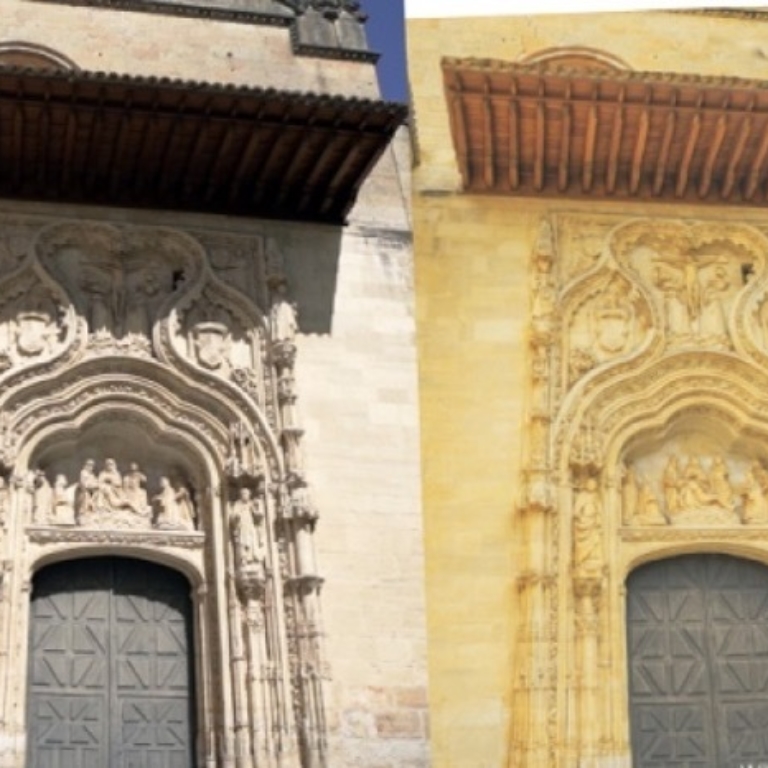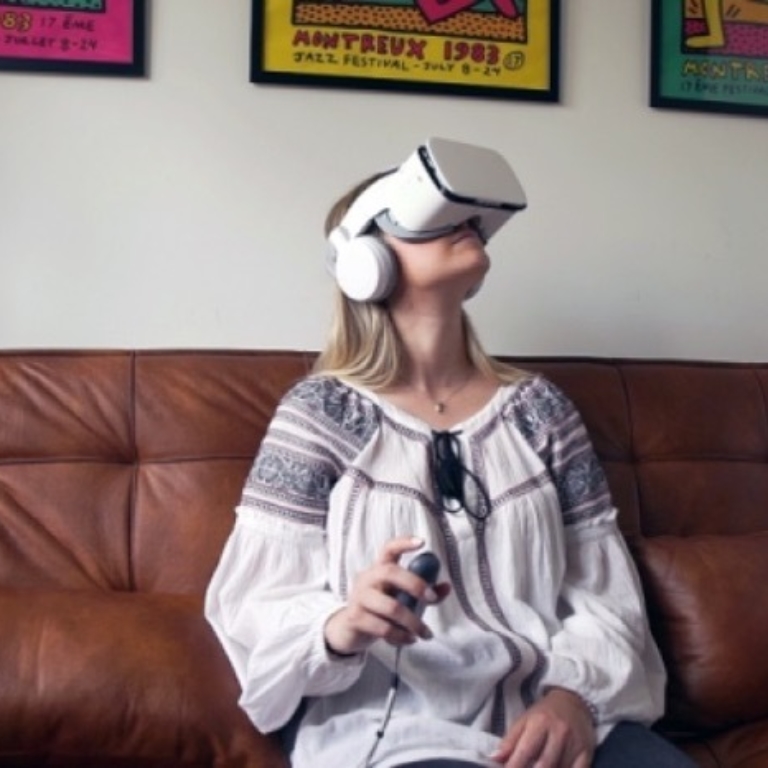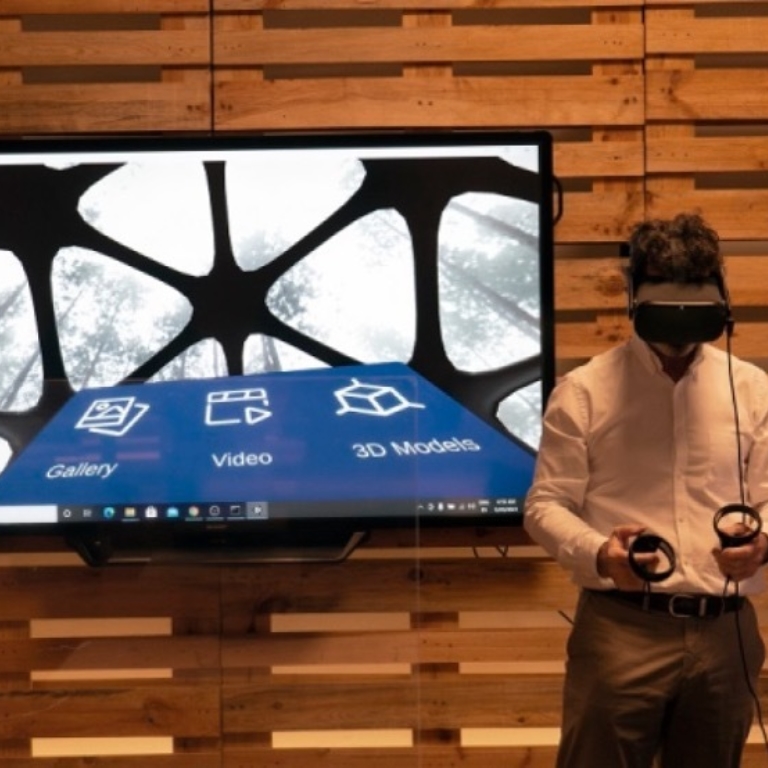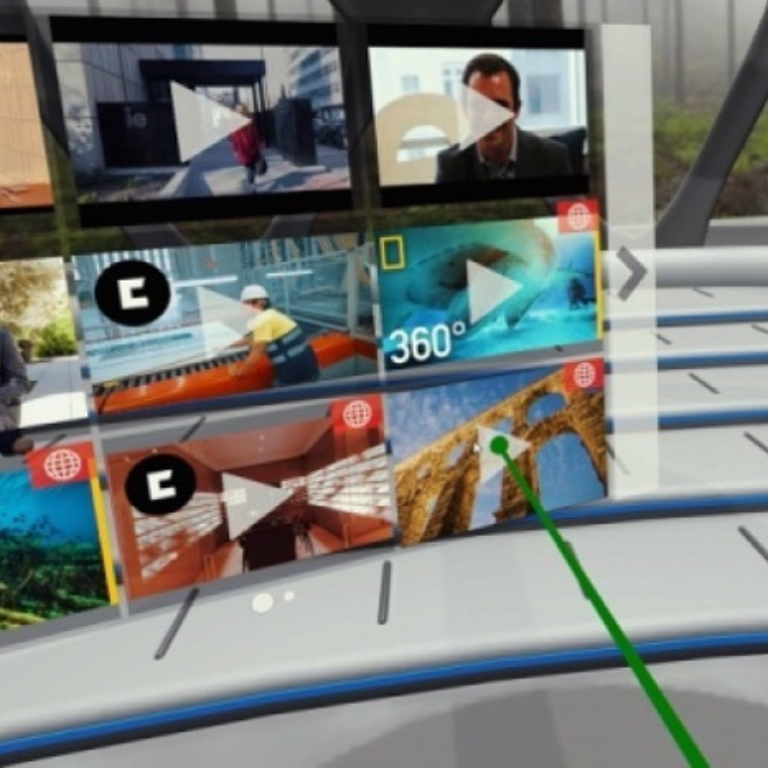5G Transformation Hub
5G Edge Computing Delivers a Pioneering Education Experience
5G can support highly immersive forms of teaching that are more engaging for students
Thanks to advanced connectivity, students can now join seminars remotely and interact with the teacher and the other students, without having to be in the same physical classroom. The combination of 5G, edge computing and virtual reality (VR) is also making it possible for teachers to incorporate didactic resources that would be impossible in conventional lessons, such as 360-degree videos or 3D models for detailed study.
Select a project
Contents
Challenge
Educators are seeking new more flexible and engaging ways of teaching. They are looking for a cost-effective means of enabling students to use VR applications to participate in remote lessons, while also being able to access highly-immersive content, such as 360 degree videos and 3D models.
Solution
Utilising low-cost cardboard headsets, 5G connectivity and edge computing, Telefónica, the IE University and Nokia have enabled teachers and architecture students to interact in a virtual space, as if it were a face-to-face class. In the virtual lessons, students could view 360 videos and 3D models of the architecture of the IE headquarters in Segovia, the former Convent of Santa Cruz la Real, a 13th century building. The partners deployed an indoor 5G radio in the University’s Chapter House, and edge computing in one of the Telefónica buildings in Segovia.
Impact & Statistics
Employing edge computing to handle the computation associated with rendering virtual spaces reduces the hardware requirements (and costs) for the end user. Enabled by 5G connectivity, locating computing power at the edge also allows for lighter devices with longer battery lives that can still access photorealistic VR content.
Wider Implications
The combination of 5G, edge computing and VR can enrich the interactions between teachers and students, while allowing for the further development of educational methodologies, including personalised solutions suitable to the students' abilities and interests. By creating a more immersive, enjoyable, and effective learning space, educators can improve students’ academic performance. If edge-based rendering capabilities are shared between multiple VR apps and similar use cases, the capital and operating costs of delivering immersive lessons will fall.
Stakeholders
IE University, Nokia, Telefónica
02
5G Edge Computing Delivers a Pioneering Education Experience
5G can support highly immersive forms of teaching that are more engaging for students
Thanks to advanced connectivity, students can now join seminars remotely and interact with the teacher and the other students, without having to be in the same physical classroom. The combination of 5G, edge computing and virtual reality (VR) is also making it possible for teachers to incorporate didactic resources that would be impossible in conventional lessons, such as 360-degree videos or 3D models for detailed study.
In Spain, the IE University has trialled this new form of teaching at its Segovia Campus in collaboration with Telefónica and Nokia. The partners deployed an indoor 5G radio in the University’s Chapter House, and edge computing in one of the Telefónica buildings in Segovia. The system was used to teach students about the 13th century architecture of the Santa Cruz La Real Monastery, the headquarters of IE University in Segovia.
“In this project, we simulated a Gothic architecture seminar given by our Vice-Rector, Miguel Larrañaga,” explains Julien Depauw, Director of Operations at IE University. “It takes place in a virtual space shared by teacher and students.” In this virtual space, the participants, although connected from different locations, enjoy the same experience. They can interact with each other and with their environment as if it were a face-to-face class. “We can play 360 videos in which all the participants can immerse themselves at the same time,” adds Julien Depauw. “Or even generate 3D models of the building we are studying.”
For the project, three places of special architectural value in the monastery were recreated in a hyper-realistic way, using photogrammetry techniques: the entrance courtyard, with the church doorway; the cloister and the chapter house. “Teacher and students can walk through these spaces freely, as if they were physically present,” explains Julien Depauw.
VR applications require high graphics processing power to generate the interactive 3D spaces in which the users are "immersed". This process is called rendering. To render hyper-realistic spaces, VR devices typically employ a powerful processor in an attached computer or in the headset itself, but this makes the end-user hardware more expensive.
Alternatively, an edge compute environment can provide the processing capacity required to render the 3D environments. As the VR glasses don’t need to perform this processing, the students can use cheaper, more basic models, while maintaining the same quality of experience. A 5G smartphone, mounted in a cardboard headset is all the students needed to attend the VR seminars at the IE University.


Vanesa Montoya
Innovation Expert at Telefónica
03
5G helps keep latency low and interactivity high
For VR applications, it is essential to minimise the so-called movement-photon time, that is, to transfer the user's interactions to the virtual world immediately, to build fluid and therefore realistic experiences. “In virtual reality developments, it is very important to transfer any interaction that the user performs in real time to the virtual scenario.
This is vital to ensure a smooth motion sickness-free experience,” explains Vanesa Montoya. The combination of 5G radio access and edge computing (placing network resources close to the user and use case location), makes it possible to obtain sufficiently low latencies to make this scenario a reality.
“To carry out this project, and hand in hand with our technological partner, Nokia, we have deployed three fundamental components,” adds Vanesa Montoya. “On the one hand, we have provided 5G NSA (non standalone) coverage to the IE University campus in Segovia, through the Nokia AirScale Indoor Radio (ASiR) solution, specially designed for indoors. In addition, we have deployed the other key component, which is edge computing, in a centre in Segovia, very close to the place of the use case, to achieve minimum latency. Finally, we use specific video technology to generate the 3D video streams that are sent in streaming to devices used by students.”
After inserting their 5G handset into cardboard VR glasses, the students use a handheld control to interact with the application and move through the spaces or raise their hands in the virtual class, among other options.
For their part, the teacher uses more powerful VR equipment and a somewhat more complex interface to use a virtual whiteboard, play 360 videos or activate 3D models that appear next to each student to guide students within 3D spaces and point out architectural highlights with a pointer. Students and teacher are represented in the virtual classroom in the form of an avatar and can always maintain audio communication.
As VR is very sensitive to delays, “we need the best connectivity and the lowest latency to be able to take the computation from rendering to edge computing, freeing the devices from that requirement in whole or in part,” says Julien Depauw. “This is only possible with wireless technology such as 5G. 5G combined with edge computing enables the lowest latency and the most stable connection for such mobile applications.”
Freeing the devices from some of the computation associated with rendering the virtual spaces allows multi-user applications to run in optimised way and democratises such applications by reducing the hardware requirements for the end user. “The more sophisticated the VR device used, the better the quality of the optics will be,” says Julien Depauw. “But it is possible to achieve compromise solutions where we get lighter devices with more optimised battery life, offloading that computation to edge computing, as well as enabling access to photorealistic content from almost any type of device that allows VR content to be played back.”
The IE University regards the compromise solution as a cost-effective way to recreate the experiences students would have in a real classroom in a virtual classroom. “And they will be able to access a series of contents that were previously reserved for a few, due to the need to have high-end VR glasses,” says Julien Depauw.


Julien Depauw
Director of Operations and Course Management, IE University
04
The future of learning will be hyper personalised
By supporting more immersive and more interactive teaching, 5G and edge computing could make learning more fun for students.
This will encourage students to be much more interested in the subject and that academic performance will be higher,” says Vanesa Montoya. “And not only that: scenarios are opening for the use, for example, of artificial intelligence (AI), to move towards educational environments more adapted to the interests and abilities of each student. All of this is going to be thanks to 5G and edge computing.”
The prototype Segovian architecture VR seminars allowed each learner to be connected via their mobile devices to a personalised learning system that can be enriched with AI technologies. The system is evolving towards student-centred learning methodologies that take into consideration their specific skills.
After concluding the Segovia project in July 2020, the partners are planning a second phase encompassing the new campus: IE Tower in ‘Paseo de la Castellna’ in Madrid, and other locations, using commercial 5G coverage. Phase 2 will include the development of a proof-of-concept to illustrate the potential that 5G technology can provide in the field of education.
“At IE University, innovation is a trait of our character,” says Martin Rodriguez Jugo, Director of IE Publishing and Online Solutions at IE University. “Innovation in a broad sense, from the application of technology to the implementation of new methodologies and processes. We have been using online educational programmes for more than twenty years. Our classrooms are equipped with screens, cameras, and microphones, to hold hybrid sessions in which the student can attend the class both in person and remotely. We have developed a method that we call ' liquid learning', highly flexible, to bridge between the digital and physical worlds, so classes may be online, offline, synchronous, asynchronous, immersive in Madrid or anywhere else in the world. These allow students and teachers to interact at different times and thus better adapt to the personal situations of each one of them”

05
Exploring how 5G can transform societies
In cases where an edge compute facility can support multiple VR use cases, the capital and operating costs can be shared across these applications.
Telefónica expects 5G-enabled extended reality (XR) solutions to be used in different scenarios where training or sharing knowledge is a must, including businesses, industry training, eHealth, or even eco smart-certified projects to reduce greenhouse gas emissions as there is no need to travel to educational establishments. “5G technology is already up to 90% more efficient than 4G in terms of energy consumption per unit of traffic (W/Mbps).” says Vanesa Montoya.
Telefónica believes 5G has the transformative power to drive the digitisation of most economic sectors, and profound change in a society that is evolving towards hyperconnectivity. “At Telefónica, from the beginning we have been clear that this new 5G technology must be accompanied by the implementation of use cases hand in hand with our customers,” explains Vanesa Montoya. “This is essential to, on the one hand, see what needs we can solve. And, on the other, to be able to analyse the new business models that these new technologies enable. In 2018 we launched the Technological Cities project, which we started first in the city of Segovia and later in Talavera de la Reina. We deploy pre-5G technology and then 5G. This project is framed in this context. Since then, we have implemented more than 70 use cases. Spain is a pioneering country at a European level in terms of carrying out 5G pilots”.
Telefónica says future lines of research and future pilots will harness the progressive emergence of native 5G XR devices, the standardisation of the split rendering concept in 5G 3GPP Release 18, and the evolution of the Metaverse – the concept of interoperable virtual 3D environments where people can interact.
For Martin Rodriguez, technology will play an essential role in the future of teaching. “Technology has allowed us to be more resilient in the crisis caused by the pandemic. But its importance is not limited to that: there is a whole series of new educational methodologies that, thanks to technology, we will be able to implement. For IE University, past innovation is our future competitive advantage. Being at the forefront, exploring, discovering, and implementing, allows us to have a know-how that gives us that advantage. And immersive technology such as extended reality is going to allow IE to continue to be at the forefront of educational innovation,” he concludes.

06
About
About the GSMA
The GSMA is a global organisation unifying the mobile ecosystem to discover, develop and deliver innovation foundational to positive business environments and societal change. Our vision is to unlock the full power of connectivity so that people,
industry, and society thrive. Representing mobile operators and organisations across the mobile ecosystem and adjacent industries, the GSMA delivers for its members across three broad pillars: Connectivity for Good, Industry Services and Solutions, and Outreach. This activity includes advancing policy, tackling today’s biggest societal challenges, underpinning the technology and interoperability that make mobile work, and providing the world’s largest platform to convene the mobile ecosystem at the MWC and M360 series of events.
For more information, please visit the GSMA corporate website at www.gsma.com.
Follow the GSMA on Twitter: @GSMA.
GSMA 5G Transformation Hub
The GSMA 5G Transformation Hub is a source of information on some of the most innovative 5G solutions in the world. This portal contains case studies detailing design, benefits, key players, measured value and the future impact of scaling up these 5G solutions worldwide. The 5G Era is now firmly established and this family of standardised GSM technologies, including mmWave, are being rolled out successfully across the globe. The GSMA 5G Transformation Hub, launched at MWC Barcelona in 2022, provides details of how 5G is best placed to deliver real value for a range of key sectors including manufacturing, energy, transportation, media and live entertainment, smart cities and construction.. Many more case studies will be added, in the coming months, covering even more industries and the GSMA is asking Members to nominate innovative 5G case studies to add to this global digital showcase. The 5G Transformation Hub and this particular Case Study are both sponsored by Qualcomm.
About this case study
This case study is for information only and is provided as is. The GSM Association makes no representations and gives no warranties or undertakings (express or implied) with respect to the study and does not accept any responsibility for , and hereby disclaims any liability for the accuracy or completeness or timeliness of the information contained in this document. Any use of the study is at the users own risk and the user assumes liability for any third party claims associated with such use.